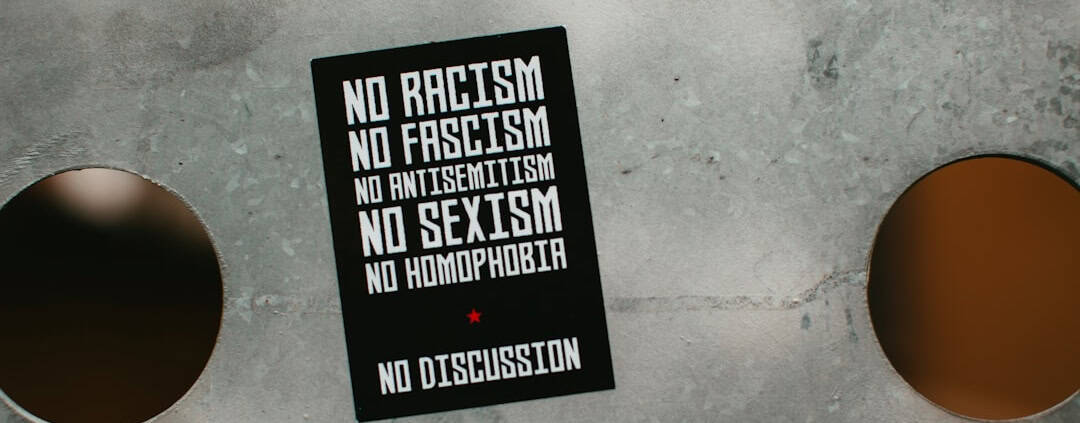The Art of Piercing and Allergies: Understanding Your Body
Body piercing has been a component of human culture for millennia, with evidence of the practice dating back to ancient civilisations such as the Egyptians, Romans and Greeks. In numerous cultures, body piercing symbolised status, wealth and spirituality. For instance, in ancient Egypt, only the pharaohs and members of the royal family were permitted to have certain piercings, whilst in ancient Rome, soldiers would pierce their nipples as a sign of their bravery and masculinity.
In some cultures, body piercing was also utilised as a form of ritual or religious practice, with piercings being viewed as a means to connect with the divine. In addition to its cultural significance, body piercing has also been a form of artistic expression throughout history. In many indigenous cultures, body piercings were adorned with intricate jewellery and designs, serving as a form of personal adornment and self-expression.
In modern times, body piercing has become a popular form of self-expression and fashion, with individuals using piercings to showcase their individuality and personal style. From ear piercings to nose piercings to more unconventional piercings such as dermal and surface piercings, the art of body piercing continues to evolve and flourish as a cultural and artistic tradition.
Summary
- Piercing has been a cultural and artistic tradition for centuries, with evidence of its practice dating back to ancient civilizations.
- Allergies occur when the body’s immune system reacts to foreign substances, such as metals used in piercings, leading to symptoms like redness, swelling, and itching.
- Different types of piercing allergies include nickel, cobalt, and chromium allergies, which can cause discomfort and complications if not addressed.
- Choosing the right materials for piercings, such as titanium, niobium, or surgical stainless steel, is crucial in preventing allergic reactions and promoting healing.
- Managing allergic reactions to piercings involves keeping the area clean, using saline solution, and seeking medical advice if symptoms persist.
The Science of Allergies: How Your Body Reacts to Foreign Substances
How Allergic Reactions Occur
Allergic reactions occur when the immune system mistakenly identifies a harmless substance as a threat and produces antibodies to fight it off. This can lead to the release of histamine and other chemicals in the body, causing inflammation and other allergic symptoms.
Allergic Reactions to Piercings
In the context of body piercing, allergic reactions can occur when the body comes into contact with certain metals or materials used in jewellery. Nickel, for example, is a common allergen that can cause allergic reactions in some people when it comes into contact with their skin.
Managing Allergic Reactions to Piercings
When a person with a nickel allergy wears jewellery containing nickel, it can lead to symptoms such as redness, itching, and swelling at the site of the piercing. Understanding the science of allergies is crucial for identifying and managing allergic reactions to piercings, as it allows individuals to take proactive steps to prevent and treat allergic symptoms.
Understanding the Different Types of Piercing Allergies
There are several different types of allergic reactions that can occur as a result of body piercings. The most common type of piercing allergy is contact dermatitis, which occurs when the skin comes into contact with an allergen and becomes inflamed. This can lead to symptoms such as redness, itching, and swelling at the site of the piercing.
Nickel is one of the most common allergens associated with contact dermatitis, and it is often found in low-quality or cheap jewellery. Other metals that can cause allergic reactions include cobalt, chromium, and copper. In addition to contact dermatitis, some people may also experience allergic reactions to other materials used in body jewellery, such as acrylic or certain types of plastics.
These materials can contain chemicals or additives that can trigger allergic symptoms in some individuals. It is important for anyone considering getting a body piercing to be aware of the potential for allergic reactions and to choose high-quality jewellery made from hypoallergenic materials to reduce the risk of developing allergies.
The Importance of Choosing the Right Materials for Piercings
| Material | Pros | Cons |
|---|---|---|
| Surgical Stainless Steel | Strong and durable | May cause allergic reactions in some individuals |
| Titanium | Hypoallergenic | Can be more expensive |
| Niobium | Hypoallergenic | Less widely available |
| Gold | Classic and stylish | Can be softer and more prone to scratching |
| Bioplast | Flexible and comfortable | May not be suitable for all types of piercings |
When it comes to body piercings, choosing the right materials for jewellery is crucial for preventing allergic reactions and promoting healing. High-quality materials such as surgical-grade stainless steel, titanium, niobium, and 14k or 18k gold are considered hypoallergenic and are less likely to cause allergic reactions compared to lower-quality metals. These materials are also less likely to cause irritation or infection at the site of the piercing, making them ideal choices for initial piercings and for individuals with sensitive skin.
In contrast, low-quality metals such as nickel or brass should be avoided, as they are common allergens that can cause contact dermatitis and other allergic reactions. It is also important to avoid materials such as acrylic or certain types of plastics, as they can contain chemicals or additives that may trigger allergic symptoms in some individuals. When choosing jewellery for body piercings, it is essential to opt for high-quality materials from reputable sources to reduce the risk of developing allergies and to promote proper healing and aftercare.
Tips for Managing Allergic Reactions to Piercings
For individuals who experience allergic reactions to body piercings, there are several tips for managing symptoms and reducing discomfort. One of the most important steps is to remove the jewellery causing the allergic reaction and replace it with hypoallergenic materials such as surgical-grade stainless steel or titanium. This can help alleviate symptoms such as redness, itching, and swelling at the site of the piercing.
It is also important to keep the area clean and dry to prevent infection and promote healing. In some cases, over-the-counter antihistamines or corticosteroid creams may be recommended to help reduce inflammation and itching associated with allergic reactions. However, it is important to consult with a healthcare professional before using any medication to ensure it is safe and appropriate for the specific allergic symptoms.
If symptoms persist or worsen despite these measures, it is important to seek medical attention to rule out any underlying infection or other complications.
How to Care for Piercings to Prevent Allergic Reactions
General Cleaning and Maintenance
It is important to avoid using harsh chemicals or alcohol-based products on the piercing site, as these can irritate the skin and delay healing.
Preventing Infection
It is also important to avoid touching the piercing with dirty hands or allowing others to touch it, as this can introduce bacteria and increase the risk of infection. In addition to regular cleaning, it is important to avoid changing or removing the initial jewellery too soon, as this can disrupt the healing process and increase the risk of infection or irritation.
Avoiding Risky Activities
It is also important to avoid swimming in pools or hot tubs during the initial healing period, as exposure to chlorine or bacteria can increase the risk of infection. Following these aftercare guidelines can help prevent allergic reactions and promote proper healing after getting a body piercing.
The Future of Piercing: Advancements in Allergy-Resistant Materials and Techniques
As the art of body piercing continues to evolve, there is growing interest in developing allergy-resistant materials and techniques to reduce the risk of allergic reactions and promote safe and comfortable piercings. In recent years, there has been an increase in the availability of high-quality jewellery made from hypoallergenic materials such as implant-grade titanium and niobium, which are less likely to cause allergic reactions compared to traditional metals such as nickel or brass. In addition to advancements in materials, there is also ongoing research into new techniques for reducing the risk of allergic reactions during the piercing process.
This includes exploring alternative methods for piercing that minimise trauma to the skin and reduce the risk of inflammation or irritation. There is also interest in developing new aftercare products specifically designed to promote healing and reduce the risk of allergic reactions after getting a body piercing. Overall, these advancements in allergy-resistant materials and techniques are helping to make body piercing safer and more accessible for individuals with sensitive skin or allergies.
As our understanding of allergies continues to grow, we can expect further innovations in the field of body piercing that will continue to improve safety and comfort for individuals seeking this popular form of self-expression and adornment.
If you’re interested in learning more about body piercing and how it can affect your body, you should check out the article “Top 10 FAQs About Body Piercing” on The Piercing Places blog. This informative piece covers common questions about body piercing and provides valuable insights into the process and aftercare. Understanding the potential impact of body piercing on your body is crucial, especially if you have allergies or sensitivities. You can find the article here.
FAQs
What are the common symptoms of an allergic reaction to a piercing?
Some common symptoms of an allergic reaction to a piercing include redness, swelling, itching, and tenderness around the piercing site. In some cases, there may also be a discharge of pus or fluid.
What are the common metals that can cause allergic reactions in piercings?
Common metals that can cause allergic reactions in piercings include nickel, cobalt, and chromium. These metals are often found in lower quality jewellery and can cause irritation and allergic reactions in some individuals.
How can I prevent allergic reactions to piercings?
To prevent allergic reactions to piercings, it is important to choose high-quality jewellery made from hypoallergenic materials such as titanium, surgical steel, or 14- or 18-karat gold. It is also important to keep the piercing clean and dry to prevent infection, which can exacerbate allergic reactions.
Can an allergic reaction to a piercing go away on its own?
In some cases, mild allergic reactions to piercings may go away on their own once the irritant is removed and the piercing site is properly cared for. However, if the allergic reaction is severe or persistent, it is important to seek medical attention.
What should I do if I suspect I am having an allergic reaction to a piercing?
If you suspect you are having an allergic reaction to a piercing, it is important to remove the jewellery and clean the piercing site with a saline solution. You should also seek advice from a professional piercer or a healthcare provider to determine the best course of action.





